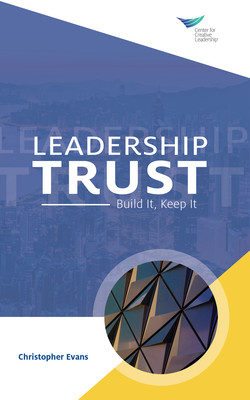Читать книгу Leadership Trust: Build It, Keep It - Christopher Evans - Страница 8
На сайте Литреса книга снята с продажи.
ОглавлениеTYPES OF TRUST
Trust is often thought of as having depth or degrees. And people often experience a range of trust—from a high level to a low level, or even an absence of trust. On the positive end of the scale, you may use words like capable or highly confident. The negative end of the scale calls to mind terms such as distrust (negative expectations regarding someone’s conduct), suspicion, or even betrayal. Finally, some people view trust as necessarily including caution or safeguards.
This is called bounded trust—or, as President Reagan once famously remarked, “Trust, but verify.”
When people think about trust in organizational life, the first place to ground themselves is in whom or what they are trusting. In most cases this is interpersonal trust—for example a one-to-one human relationship, as in one person trusting another person who might satisfy or disappoint the trusting individual with his or her actions. In the workplace this “person” is often a group or department—for example, senior leadership, which must be trusted to take care of its employees. Even though senior leadership is actually a group, when they act as people making decisions about people it is considered an interpersonal relationship.
The most common framework for interpersonal trust uses expectancy theory—the idea that trust is based on beliefs and expectations about someone’s intentions or performance and on the trusting individual’s emotional security surrounding those beliefs. In other words, it’s like a transaction between two people. And the higher the stakes for the trusting individual, the more building of trust may be required. In some cases and with some people, trust needs to be given in order to earn it in return.
Sometimes people deal with system trust, or trust (or lack thereof) that an impersonal structure, such as a federal government or a monetary system, is sound. For instance, they might have a high level of trust that the Postal Service will deliver their mail, but they might have a lower level of trust that the Social Security system will still be viable when they try to collect on their years of deposits upon retirement.
Most of the trust issues faced by leaders involve interpersonal trust, and these show up in all facets of their relationships. Stephen M. R. Covey, an organizational consultant and author of The Speed of Trust: The One Thing That Changes Everything, describes what happens when trust issues are not resolved: Low trust is costly to an organization because it impacts speed and cost, taxes relationships, saps productivity and creativity, and makes it impossible to sustain great results. Covey cites a 2002 study by global consulting firm Watson Wyatt Worldwide (which merged in 2010 with Towers Perrin to form Towers Watson) that showed that the total return to shareholders in high-trust organizations is almost three times higher than the return in low-trust organizations.
So if trust issues are so prevalent and important, logic and emotion suggest that leaders should approach them as strategically as possible.
